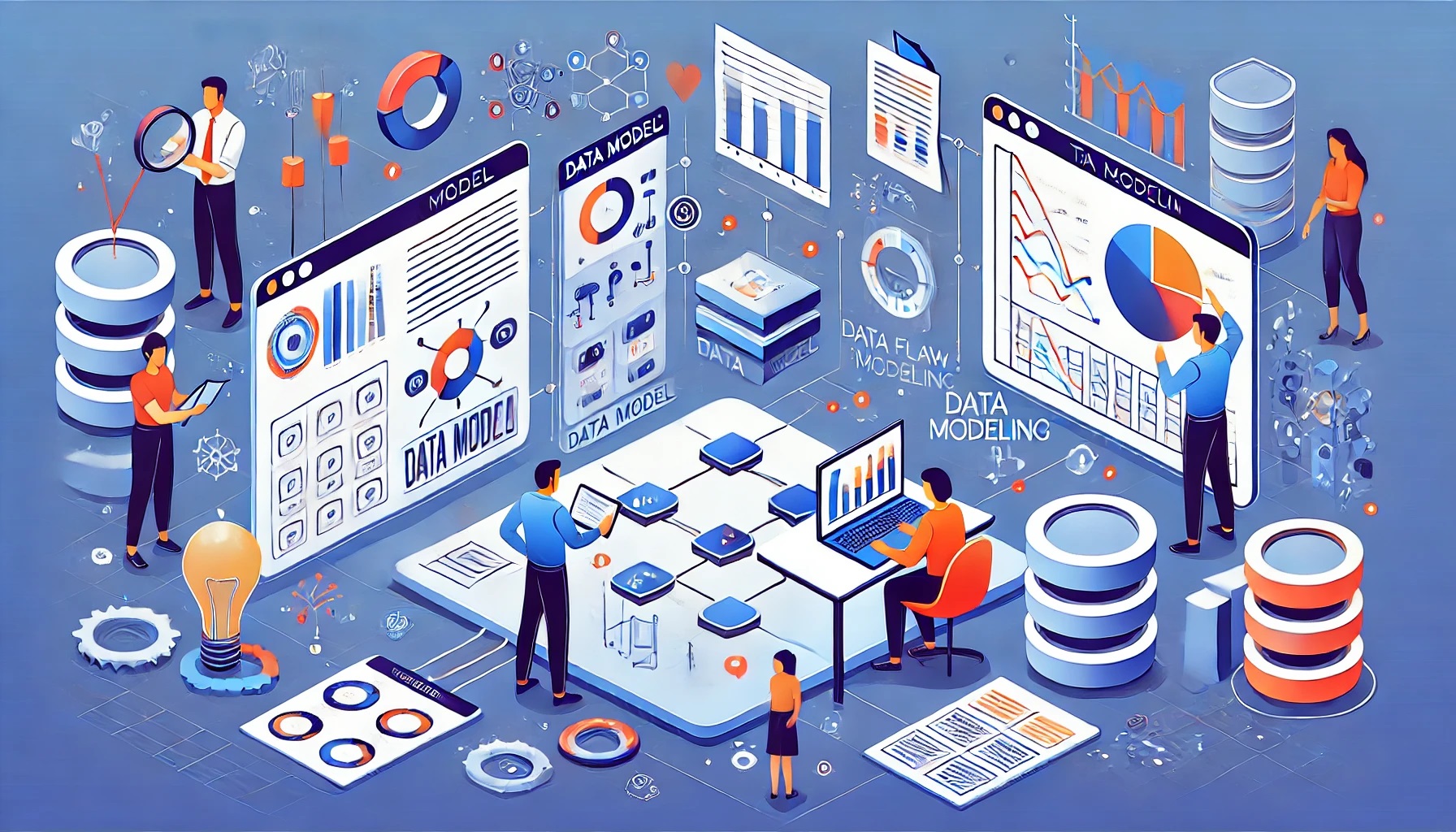Data Modelling
 Our Data Modelling Services are designed to provide a structured approach to creating data models that accurately represent your business processes and requirements. We use modern techniques, including AI-powered methods, to develop comprehensive data models that support your strategic and operational needs.
Our Data Modelling Services are designed to provide a structured approach to creating data models that accurately represent your business processes and requirements. We use modern techniques, including AI-powered methods, to develop comprehensive data models that support your strategic and operational needs.
Key Components and Execution
1. Conceptual Data Modelling
Business Requirements Analysis: We begin by gathering and analyzing business requirements to create high-level conceptual models that define the scope and key entities of the data architecture.
Entity-Relationship Diagrams (ERD): Developing ERDs to visually represent the relationships between different data entities, ensuring a clear understanding of the data structure.
2. Logical Data Modelling
Normalization: Applying normalization techniques to organize data attributes into logical tables, reducing redundancy and ensuring data integrity.
Data Dictionary: Creating a detailed data dictionary that defines each data element, its relationships, and attributes, providing a comprehensive reference for data management.
3. Physical Data Modelling
Database Schema Design: Translating logical models into physical schemas tailored for specific database technologies, optimizing for performance and storage.
Indexing Strategies: Implementing indexing strategies to enhance query performance and ensure efficient data retrieval.
4. Modern AI-powered Approaches
AI-driven Data Modelling Tools: Utilizing AI-powered tools like DataRobot and H2O.ai for automating the creation and optimization of data models. These tools leverage machine learning algorithms to suggest the best data structures and relationships.
Generative Adversarial Networks (GANs): Employing GANs to generate synthetic data that mimics real-world data distributions. This approach is useful for testing and validating data models in environments where data privacy and availability are concerns.
Natural Language Processing (NLP): Using NLP techniques to analyze and extract meaningful information from unstructured data sources. This helps in integrating diverse data types into cohesive data models.
5. Data Integration and ETL Processes
ETL Pipelines: Designing and implementing ETL (Extract, Transform, Load) processes to integrate data from various sources into a unified model. This includes data cleansing, transformation, and loading into the target database.
Real-time Data Integration: Setting up real-time data integration processes using stream processing technologies like Apache Kafka and Apache Nifi to ensure that the data model is always up-to-date with the latest information.
6. Data Quality and Governance
Data Quality Assurance: Implementing data quality checks and validation rules to ensure the accuracy, consistency, and completeness of data within the model.
Governance Frameworks: Establishing governance frameworks that define data ownership, stewardship, and compliance requirements to maintain data integrity and security.
7. Performance Optimization
Scalability: Designing data models that can scale with your business needs, ensuring they can handle increasing data volumes and complexity.
Query Optimization: Optimizing queries and data access patterns to improve the performance of data retrieval and manipulation operations.
Execution Approach
Initial Consultation and Requirements Gathering: Engaging with stakeholders to understand their data needs and business objectives.
Model Development and Iteration: Developing initial data models and iterating based on feedback and validation against business requirements.
Implementation and Integration: Implementing the final data models within the existing IT infrastructure and ensuring seamless integration with other systems.
Ongoing Support and Maintenance: Providing continuous support and maintenance to adapt the data models to evolving business needs and technological advancements.
By leveraging modern data modelling techniques, including AI-powered methods, our Data Modelling Services ensure that your data structures are robust, scalable, and aligned with your business objectives. This empowers your organization to manage and utilize data effectively, driving better decision-making and operational efficiency.
